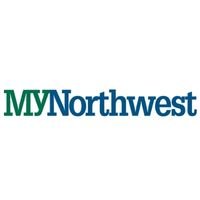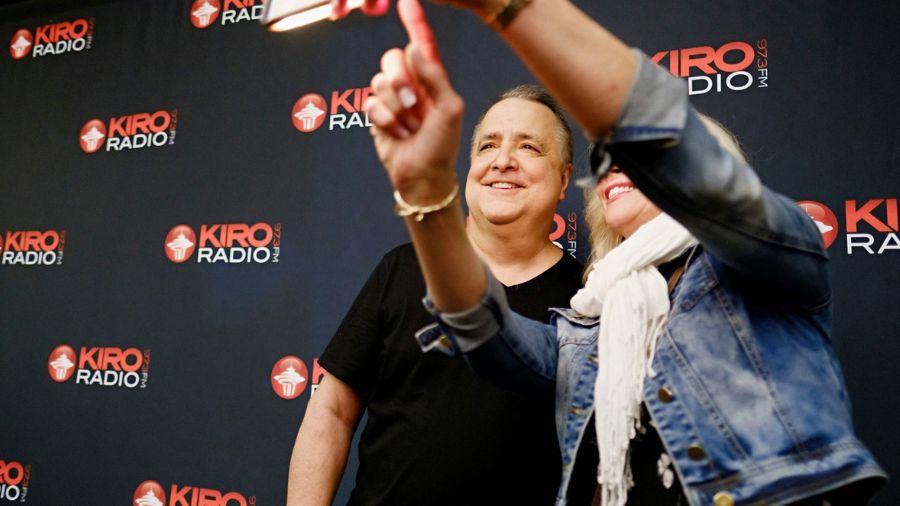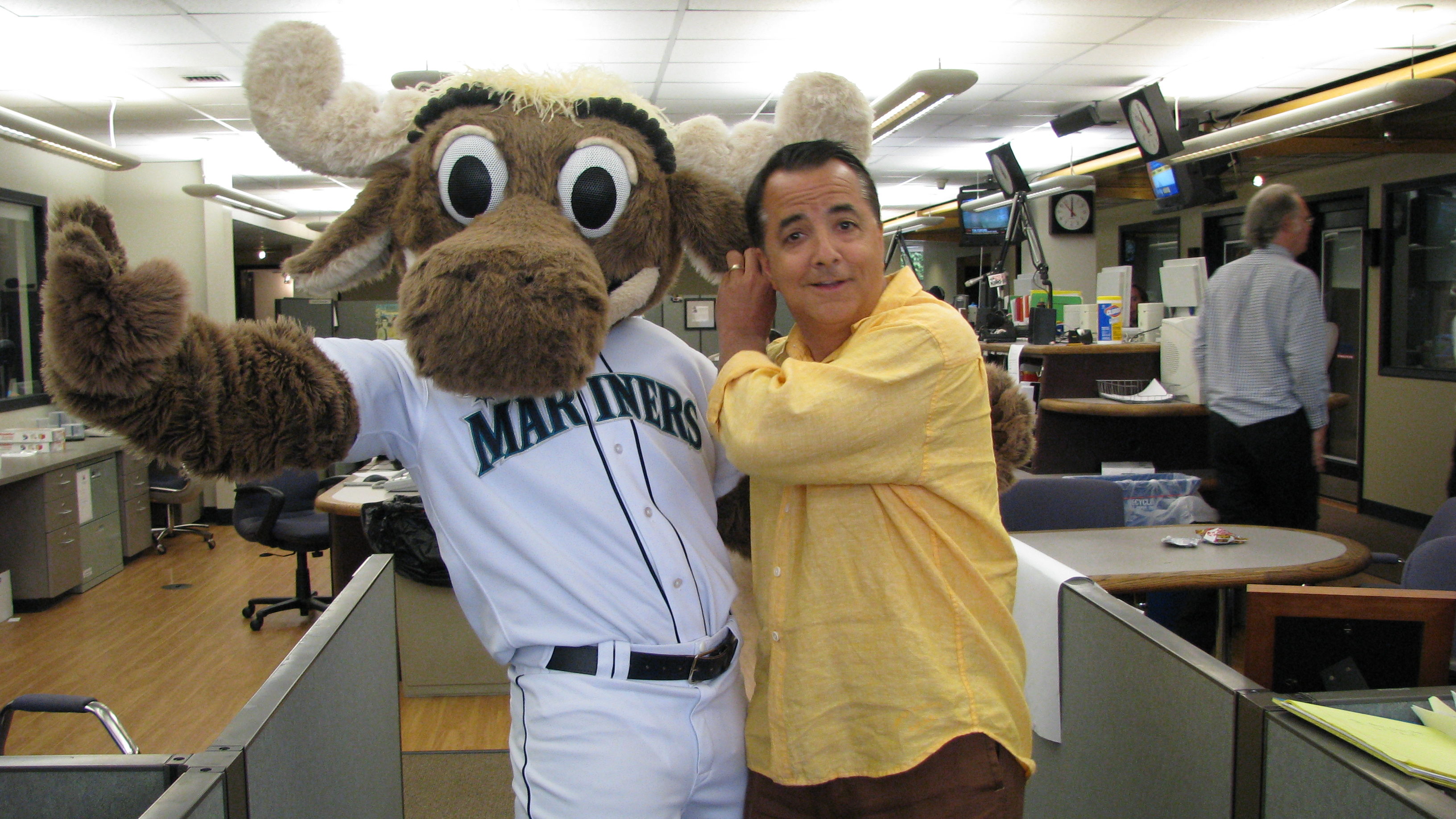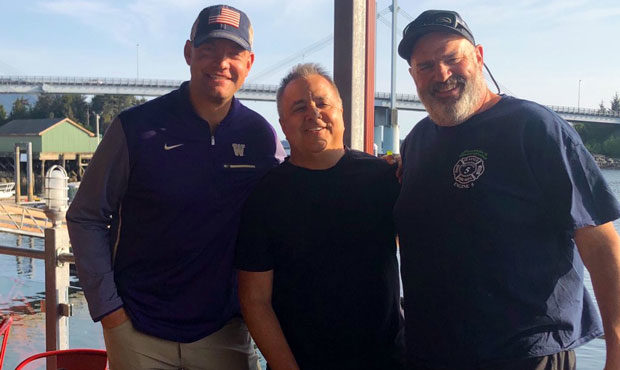KeyArena group pitches vision for Seattle Center traffic
Apr 11, 2017, 1:07 PM | Updated: 6:50 pm

(AP file photo)
(AP file photo)
For the Oak View Group’s pitch to renovate KeyArena to succeed, the group will need to convince the City of Seattle that adding an NBA and/or NHL team to the stadium won’t snarl downtown congestion any worse than it already is.
RELATED: Prospective developers kick the tires on arena
And the developer’s will be pushing away from “outdated facts” and toward a vision of transportation in the year 2021 and beyond. Not “2007 thinking.”
“I think people keep going back to 2007 and the Sonics and the way they used to access that facility and we think there is an entirely different paradigm coming,” OVG’s Director of Special Projects Lance Lopes told KIRO Radio’s Dori Monson.
Lopes gave Dori a sneak peek into OVG’s traffic study on Tuesday, with hopes that the results wouldn’t be lost in the shuffle of the design when it is submitted to the mayor’s office Wednesday. He presented a technologically advanced and transit-led vision, which includes contracting with parking lots that will add more than 11,000 spots within a 15-minute walk of the stadium; an app that will let fans reserve and know the cost and most efficient route to the stadium before leaving the house; and a revitalized Monorail.
Lopes touched on the misconceptions of traffic patterns, such as on Mercer Street.
“At 5:30 at any given night, traffic on Mercer headed toward KeyArena is nonexistent,” Lopes said. “I took some photos the other night, I couldn’t get pictures with cars in them. Eastbound, headed for the freeway, I absolutely agree. That is theMercer Mess that all of us refer to. But I would simply say that if people are telling you that Mercer, this beautiful three-lane boulevard headed into Seattle Center, KeyArena, is a congested mess in the drive time – they’re simply misstating the facts.”
OVG, headed by sports executive Tim Leiweke, is among the bidders to remodel KeyArena, along with concert giant AEG. Each hopes the city will allow them to invest in the city-owned asset to create a world-class music venue, and potentially host professional basketball and hockey. The city’s other option is handing the reigns to entrepreneur Chris Hansen’s Seattle Arena Group, which will build a new arena in SoDo. Hansen’s group has repeatedly said that revitalizing KeyArena enough to satisfy the NBA or NHL is not plausible.
Alternate modes of travel
OVG’s plan anticipates that automobile access as a mode of transportation will decrease from 82 percent to 69 percent by 2035 when a light rail station opens near the stadium. They are banking on the alternate modes of travel.
That includes light rail, as well as walking and biking. And the monorail. Lopes told Dori that he recently left a concert at KeyArena at 11 p.m. and was on the freeway within 16 minutes of taking the monorail back to Westlake.
“The Monorail is something that I know many people have long known about but very, very few people have ever really embraced as a mass-transit solution but it was built in 1962 to move millions of people,” Lopes said.
The plan says that the arena currently hosts approximately 110 events, with 19 exceeding 10,000 attendees. The new arena could host up to 200 events with 100 exceeding that 10,000-person threshold. OVG says the change in condition will increase the frequency, not size, of large events.
A dive into the Oak View Group proposal
Automobile solutions
OVG says there is 42 percent excess capacity on the inbound roadways to the arena at peak periods (6-7 p.m.) and that Seattle Center’s centralized location is a significant benefit because it is served by the 13 arterials, which allow for traffic disbursal. They say the new Highway 99 tunnel and connection of John, Thomas and Harrison streets will improve connections to Aurora, as well as the stadium. Solutions:
–ASC Technology: Adaptive Signal Control in the area will improve flow efficiencies by approximately 5 to 10 percent. Beyond optimizing signal timing, ASC provides signals the flexibility to respond to unanticipated surges, interruptions or shifts in traffic flows due to collisions, road construction projects, or variations in access patterns from large events.
-Neighborhood shuttles: OVG has explored the possibility of coordinating shuttles between the stadium and South Lake Union to reduce traffic near the stadium. The shuttle service could be operated on multiple routes using existing shuttle transports to transport event patrons to the stadium. The direct shuttle service would be coupled with reduced parking rates at garages to encourage event patrons who choose to drive, to park in more remote offsite parking spaces.
-Disbursed Routing: Wayfinding apps will provide customers with the most efficient routes to the stadium, balancing the traffic distribution. Patrons would be directed to I-5 interchanges other than Mercer Street, such as James Street, Seneca Street or Olive Way south.
-Ride-sharing discounts: OVG would provide designated drop-off and pick-up locations for Transportation Network Companies, such as Uber and Lyft. OVG anticipates partnerships with Lyft, Uber, Car2Go, and Reach Now to provide incentives and discounts for ride-sharing to events.
Transit
OVG says there will be 21 bus routes serving the area within one-half mile of the stadium by 2019. During estimated peak demand for bus transit (10-11 p.m.), capacity is 5,520 passengers. They also consider the Monorail to be a “major, reliable, efficient and affordable transit solution,” that connects Seattle Center to the transit network in two minutes. They also note that a light rail station will be one block from the stadium for “well over half of NASC’s projected useful life.”
Parking
Existing available parking supply exceeds parking demand in the immediate area around the arena in all but 20-30 events per year, according to OVG. The developer has identified more than 11,000 available spaces within a 15-minute walk radius of the stadium – which they say is the same radius used to evaluate other stadium and arena projects in Seattle. Solutions:
–Parking Apps: OVG will utilize technology such as a parking app that will be supplied to its customers that will identify location, available spaces, price and reservations, which will significantly increase utilization efficiency. These types of mobile parking apps are used at the Moda Center in Portland, Ore.
–Incentives: OVG will offer cross-marketing opportunities with restaurants and bars in the neighborhood to encourage event attendees to arrive early and stay later, spreading arrival and departure rates.
–Parking garage: OVG plans to build an 850-space garage adjacent to the stadium.
Monorail
The Seattle Center Monorail provides a nonstop connection from Seattle Center to Westlake Center. The capacity for each train is 225. It has the capacity to move 2,250 people per hour and is currently underutilized, especially in the winter, OVG says. The station is less than a 4-minute walk to the stadium. Solutions:
-Incentives: Encourage and incentivize Monorail use by event attendees, highlighting the connection to light rail and nearby parking garages. Incentives include providing free or discounted tickets as part of ticket sales and partnering with off-street parking facilities near Westlake Station.
-Expanding the platform: OVG says it has taken the lead in dialogue about expanding the Westlake Monorail platform and improve connection to the transit tunnel. OVG supports expansion of the platform to allow multiple train boarding, which would double rider capacity to 5,000 passengers per hour.
-Integrate ORCA card fare to the system
-OVG could stage buses after events to connect to park-and-ride lots in Northgate, South Kirkland, Eastgate and Federal Way.
Bicycling
The number of residents living and working within a 15-minute walking distance of Seattle Center has increased over the last 10 years. OVG says it is safe to assume non-motorized travel will increase. Solutions:
–OVG would encourage this activity by providing secure bicycle storage or bike valet for patrons. Secure bicycle storage could include a bicycle corral or lockers. “Bicycle valets” would be designated for parking that is staffed to prevent theft.













